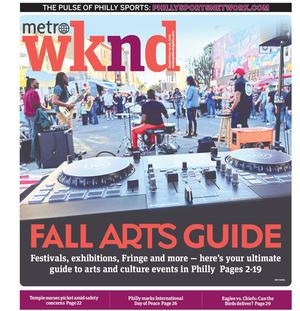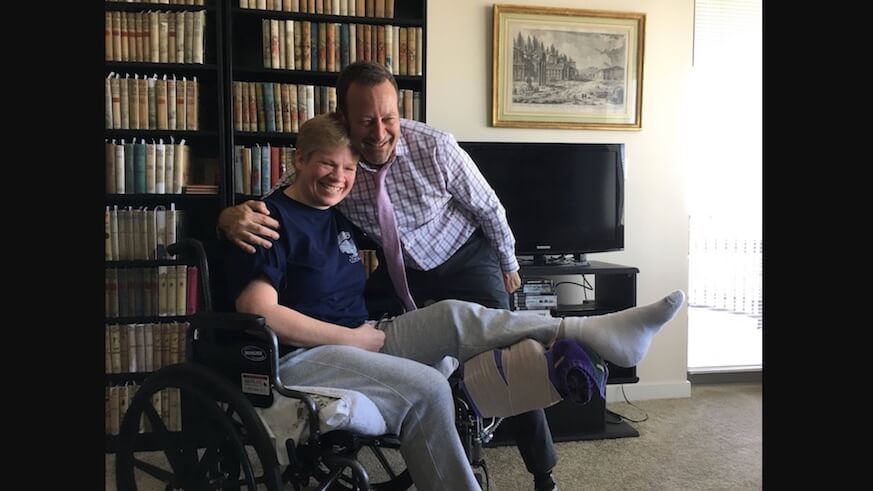Last year, Regan Kladstrup was traveling on her bicycle from 4th and Walnut to a meeting at the University of Pennsylvania, where she works.
She came up to a red light at the intersection of Spruce and Broad and stopped in the bike lane, next to a delivery truck in the vehicle lane. Waiting for the light to turn green, she noticed the truck beginning to make a right turn against the red light, into her.
“So, I started hopping with my bike over to the sidewalk,” Kladstrup, 49, says from the living room of her Fitler Square apartment on a recent afternoon, “and, after a certain point, I knew some part of me was going to be hit.”
Doctors and witnesses would later tell Regan her leg was pulled into the wheelbase of the truck, and she was dragged along the sidewalk onto the corner of Spruce and Broad Street.
“And I’m told the truck continued its turn onto Broad Street and that people stopped the truck there,” she says. “Whether that’s true, whether he stopped at his own accord, I don’t know.”
When she got to the emergency room, she was told doctors would be amputating her foot and, she says, “that made a lot of sense,” considering what it looked like.
This was September 14, 2017, about two months before Philadelphians banded together to protest the lack of protected bicycle infrastructure on streets around the city. In November, 24-year-old Emily Fredricks would be killed on Spruce Street, also by a large truck; Rebecca Redford would suffer horrific injuries after being run over by a truck in an intersection of Spruce Street in December. They’re just a few of the dozens of cyclists who’ve been injured or killed on what were once Philadelphia’s safest cycling corridors.
Spruce and Pine Streets, like bike lanes all over Philadelphia, are in need of heavy repairs. And on June 4, several ordinances will be debated in City Council regarding the future of Spruce and Pine.
Bicyclists interested in increased safety – like flipping the Spruce Street bike lane from the right to the left, which will help motorists see cyclists; and adding some physical protection to the street, which could stop drivers from causing crashes like the one Regan was involved in – should come to the hearing on June 4, from 1 to 4 p.m. and show support for safer infrastructure.
Some of the changes are being met with resistance from near-neighbors, who like using the bike lane to park their car and unload their groceries. Society Hill Residents Association narrowly voted against adding safety benefits to the streets.
As for Regan, 10 surgeries later, she’s still in a wheelchair, but expects to walk soon—her doctors were able to help her keep her foot—and, hopefully, one day, get back on a bike.
“That will be the real test,” she says, “riding a bike again.”
She has some requests, though.
“I’d like to see very visible indications of bike lanes, and bike lanes that don’t mysteriously disappear at times,” she adds with a laugh. “I don’t think it’s enough to say that we have bike lanes. They have to function and they have to do their job to separate us from traffic. And as long as drivers know they don’t have to pay attention to them, they’re not very effective. I’ve been in cities where bike lanes work. And it would be nice if we had that here.”


























